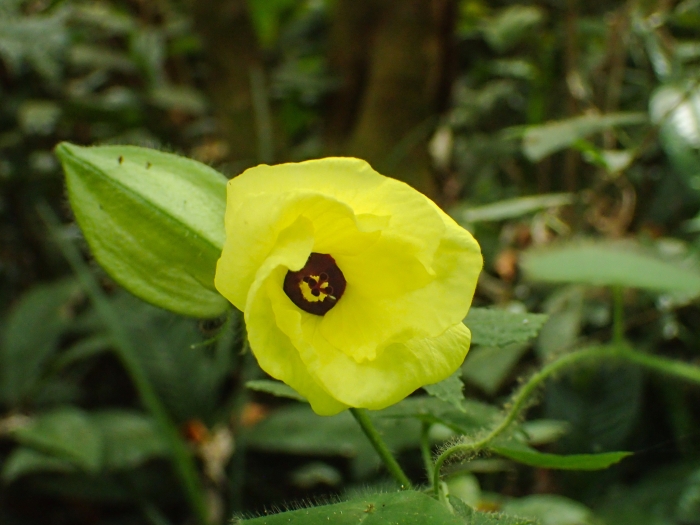Musk Mallow
(Abelmoschus moschatus)
Musk Mallow (Abelmoschus moschatus)
/
/

Gerard Chartier
CC BY 4.0
























Estimated Native Range
Summary
Musk Mallow is valued for its aromatic and medicinal properties, with parts of the plant being used in traditional medicine and perfumery. It is also cultivated for its seeds, which are used as a spice or flavoring agent. In gardens, it can serve as a striking specimen plant or be used in mixed borders. This plant prefers full sun to part shade and thrives in well-drained soils. While it is frost-hardy, it benefits from protection in colder climates. Regular watering is necessary, especially during dry periods. However, gardeners should be cautious as Abelmoschus moschatus can become invasive outside its native range, potentially outcompeting local flora.CC BY-SA 4.0
Plant Description
- Plant Type: Shrub, Herb
- Height: 1.5-2 feet
- Width: 1-2 feet
- Growth Rate: Moderate
- Flower Color: Red, Yellow
- Flowering Season: Summer, Fall
- Leaf Retention: Deciduous
Growth Requirements
- Sun: Full Sun
- Water: Medium
- Drainage: Medium
Common Uses
Border Plant, Edible*Disclaimer: Easyscape's listed plant edibility is for informational use. Always verify the safety and proper identification of any plant before consumption., Fragrant, Low Maintenance, Showy Flowers
Natural Habitat
Open woodlands, grasslands, and riverine habitats in tropical and subtropical regions of Asia and Australia
Other Names
Common Names: Ambrette Seeds, Musk Mallow, Abelmosch Musqué, Algalia, Almizcle Vegetal, Ambretta Semi, Ambrette, Bamia Moschata, Annual Hibiscus
Scientific Names: , Abelmoschus moschatus, Abelmoschus pseudoabelmoschus, Abelmoschus pseudoabelmoschus, Bamia betulifolia, Bamia multiformis, Hibiscus abelmoschus var. genuinus, Hibiscus spathaceus,
GBIF Accepted Name: